Final’s flagship True Wireless IEMs have as many hits as misses.
- Great build, unique design
- Final Connect app offers useful features
- Good microphone performance
- Laid-back, analog-ish tuning that’s never fatiguing (firmware 1.8.1)
- Smooth treble with excellent timbre.
- Excellent soundstage and imaging
- The carrying case is oversized
- Large shells can be uncomfortable for some
- No wear detection
- ANC is prone to picking up wind noise
- Recessed upper mids
- Macrodynamic punch sounds dampened
- Abrupt tuning change via firmware update
- Battery life could be better
- Expensive for a pair of TWS IEMs
Where to Buy
Introduction
Final’s first TWS IEMs in the ZE series, the ZE3000, garnered widespread praise and are still among the best TWS IEMs I have experienced.
Enter the Final ZE8000, their flagship TWS IEMs with a price tag to match. The form factor is a rather unusual half-in-ear design. Couple that with the oversized carrying case, and the ZE8000 stand out amidst the competition.
Final is also touting the DSP chops of the ZE8000 and how they can unearth “hidden details’ in tracks thanks to their “8K Sound” tech. The driver inside is completely redesigned, and even the amplification stage is a class-AB design, a departure from most TWS IEMs.
The spec sheet is impressive indeed, but how much of that translates into a sound that befits the price tag? Let’s find out.
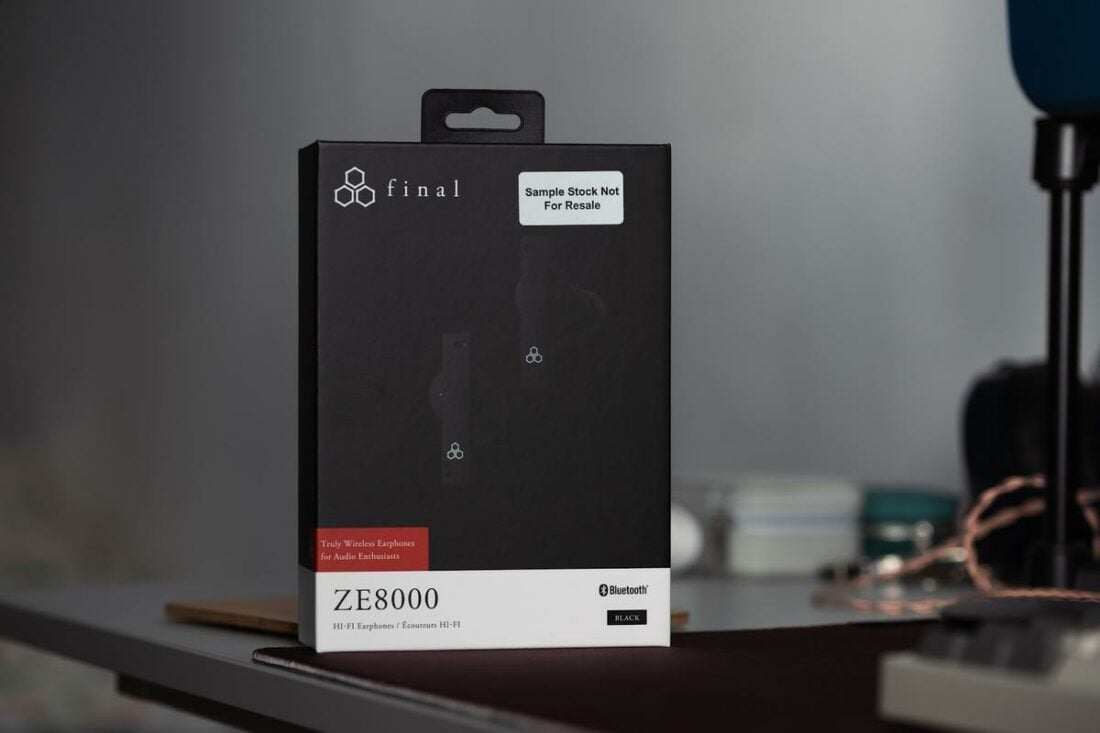
Case ⓘ
Battery ⓘ
- Battery Life: 12
- Connector: USB Type-C
- Wireless Charging: No
- Battery Capacity: 420 mAh
Despite the large size, the battery capacity is only 420 mAh. There is a lot of wasted space inside the case, which could be better utilized for a beefier battery pack.
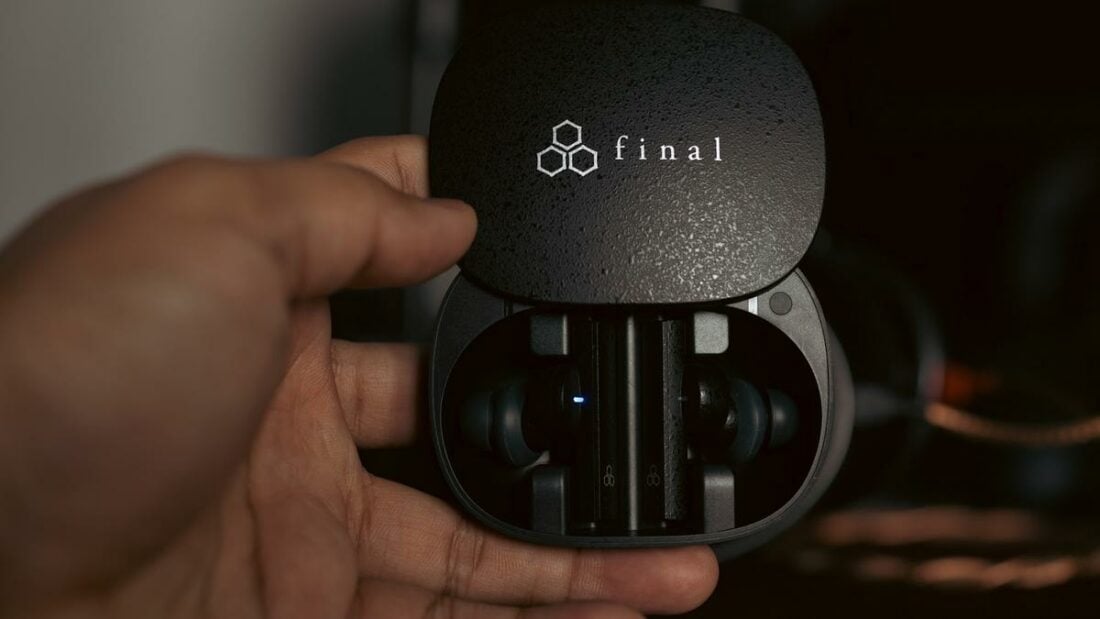
UX ⓘ
- Can be opened easily with one hand: Yes
- Pass the shake test: Yes
- Light Indicators: Shows charging state and shows remaining battery.
The case can be opened using one hand. The four LEDs on the front show the battery level and doubles as a charging indicator. The sliding mechanism could be smoother, though. There is little grip on the case surface, so be careful when sliding out the lid.
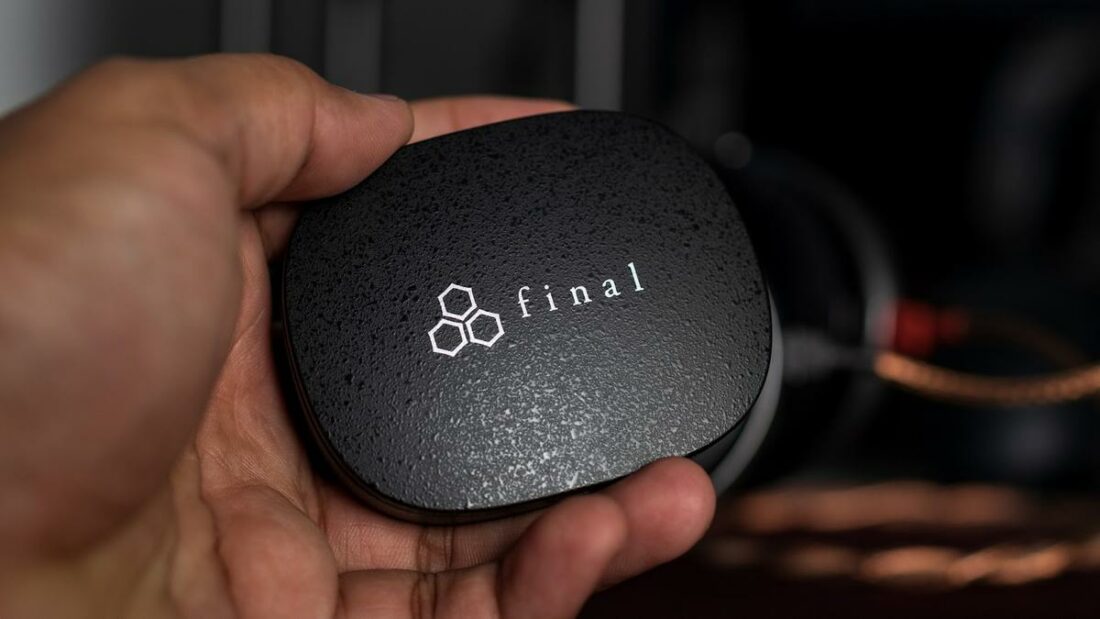
Design ⓘ
- Shape of the case: Rectangular
- Material: ABS and resin mixed polymer
- Build Quality: Premium
Sadly, the case is too large to carry around comfortably in trouser pockets.
The carry case has a DSLR-body-like texture on top that Final refers to as a “Shibo” finish, similar to the ZE3000 case.
The finish is not grippy enough to securely hold the case when sliding open the lid. Caution is advised when using the ZE8000 on the go lest the case flings out of the hands.
The type-C port is on the back of the case and supports quick charging.
Portability ⓘ
- Weight: 49.8g (case only), 63.4g (with earbuds)
- Volume: 7.8 cm x 6.2 cm x 3.2 cm = 154.7 cm cu
- Portability: Very poor
Earbuds ⓘ
Battery ⓘ
- Battery Life: 4 hrs (with ANC and 8K Sound on)
- Charge Time (15mins): 120 mins playback time
The case holds an additional 12 hours of charge or three full charge cycles. Coupled with the ~4 hours of battery life in the IEMs, it totals 16 hours of playback on one charge.
I need to charge them about twice a week during regular use using the AptX Adaptive Bluetooth codec, with ANC and 8K sound enabled. Your mileage may vary depending on the parameters.
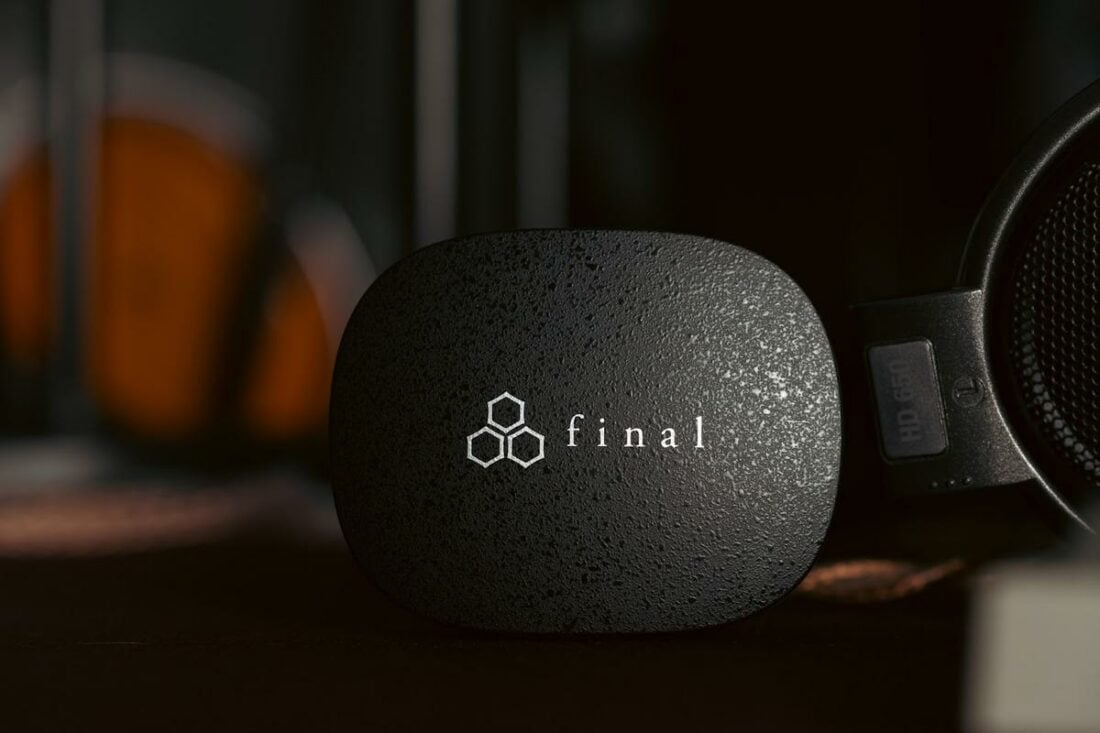
The Final ZE8000 take about 1.5 hours to charge fully. Five minutes of charging can give you up to 45 minutes of playback.
UX ⓘ
- Control Mechanism: Touch
- Touch Accuracy: Average
- Control Symmetry on both earbuds: No, individual setup for each earbud
- Mono Use: Yes, both sides
The middle portion of the stem acts as a touch-sensitive panel. Touch accuracy and consistency are average, sometimes you will miss a tap or two (or accidentally trigger), but it’s not as bad as the ZE3000.
Unfortunately, the controls are fixed by default, with no room for customization.
Here’s a short rundown of the available controls:
- Left earbud, single tap: Toggle between ANC and Transparency mode
- Left earbud, double tap: Volume down, receive/end call
- Left earbud, triple tap: Previous track
- Left earbud, touch & hold: Wind-cut mode
- Right earbud, single tap: Play/pause music
- Right earbud, double tap: Volume up, receive/end call
- Right earbud, triple tap: Next track
- Right earbud, touch & hold: Voice through mode
- Either earbud, tap five times: Activate voice assistant
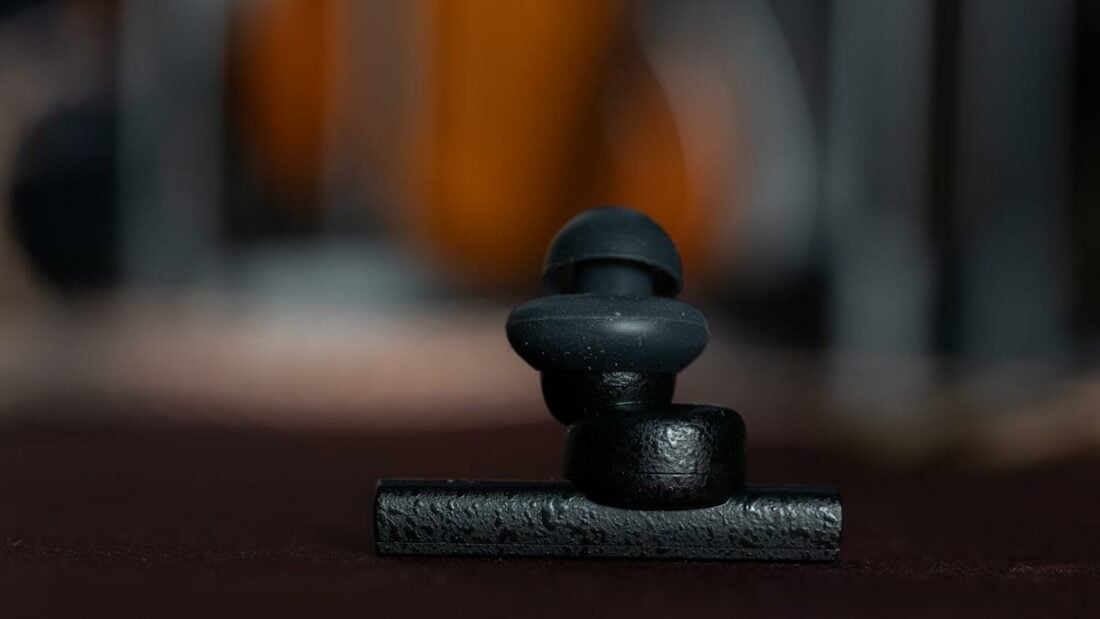
Design ⓘ
- Profile: High
- Material: ABS and resin mixed polymer
- Comfort: Good
- Fit: Good
The ZE8000 stand out thanks to their unique two-stage design. The front part of the housing is dedicated to the driver, while the circular part in between the stem and the front houses the electronics for ANC. The stem holds the capacitors and the battery.
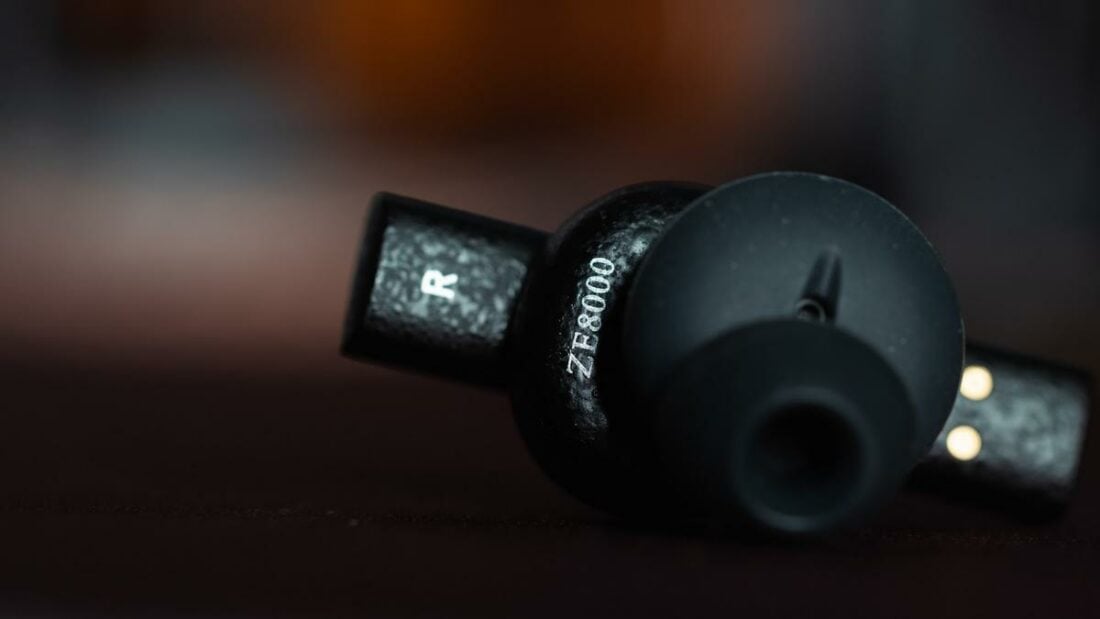
The interfaces for charging are on the inner side of the IEM, alongside the channel markings and a vent for pressure relief. The entire surface has the same “Shibo” finish as the shells. Fingerprints and smudges are not visible at all. The added texture also helps to add grip.
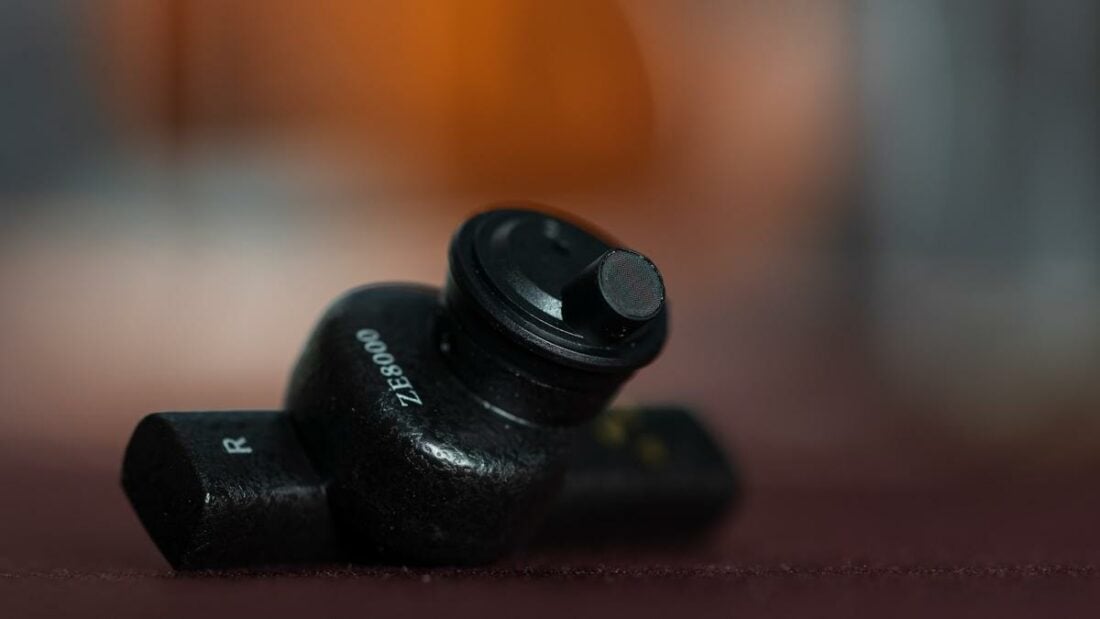
While I had no issues with fit or seal, my wife struggled to find a good seal and comfortable fit, even with the smallest supplied tips. Her concha pressed against the driver area and created discomfort. Loosening the fit helped in comfort but lost the seal.
An audition of the ZE8000 before purchase is recommended for those with small ears.
Final utilizes their self-developed 10mm F-core DU drivers in the ZE8000. An ingenious damping scheme consists of a front and back acoustic cavity to equalize pressure within the driver housing. This design allowed Final to avoid driver flex.
Mic ⓘ
- Noise Cancellation: Good
- Voice Pick-up: Good
The mic has good voice pickup in quiet places. Some of the surrounding noise is picked up in noisy areas, though speech remains clear. Overall, good mic performance all around.
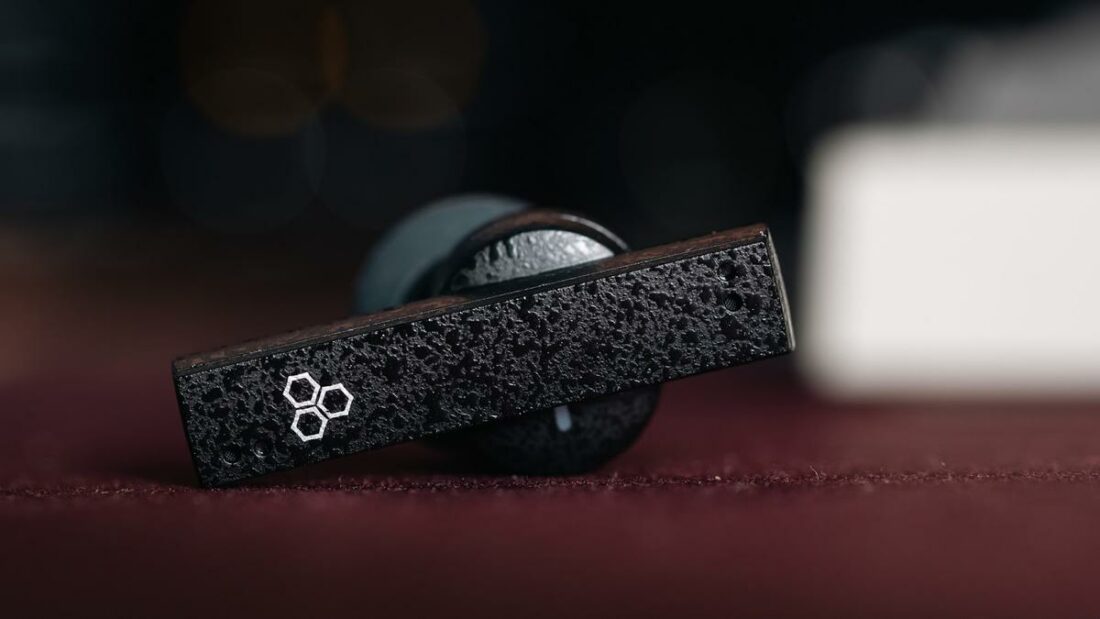
A big issue with the ZE8000 is how much wind noise is picked up by the mic array, especially the microphone on the top of the stem.
Wind cut mode helps to a degree, but the ANC performance is compromised. With ANC on, the wind noise creeps through, which can be a big distraction.
Mic demo
Sound ⓘ
- Driver: 10mm single dynamic driver, Al-Mg alloy dome, silicone suspension
- Sound Signature: Warm, laid-back
- Bass: Good
- Mids: Average
- Treble: Outstanding
- Sound Detail: Good
Final ZE3000 have a warm, laid-back tuning with recessed upper-midrange.
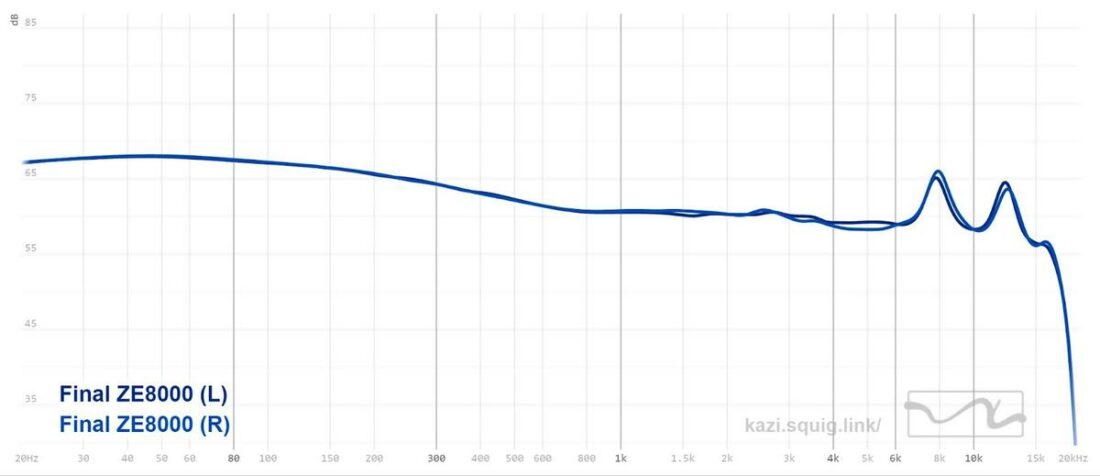
Before going further with the sound impressions, I need to address the elephant in the room: tuning change via a firmware upgrade.
For some reason, Final significantly changed the tuning of the ZE8000 between firmware versions 1.8.0 and 1.8.1 (the latest firmware as of 11 Jun 2023). This change is not documented in the firmware’s changelog, but it’s immediately evident.
Before the update, the ZE8000 were bright V-shaped in tuning. After the update, they are laid-back and smooth, with noticeably recessed upper-mids. The ideal tuning would be somewhere in-between, but that’s not the issue here.
Who knows, this might change again down the line. For sanity’s sake, I hope Final picks a… final tuning and sticks with that because it’s difficult to understand what the “stock” tuning is supposed to be right now.
Final ZE8000 have a bass-forward, laid-back tuning. The upper and mid-bass have a noticeable boost which thickens the lower-mids and bleeds into the midrange to a degree. On the plus side, this gives added heft to snare hits and baritone vocals which can be enjoyable in certain tracks.
On the other hand, low-level details are masked, as can be heard on EIDA’s Relentless where some of the subtle strokes on the fretboard at the beginning are muted.
Transients are uncannily sharp for a pair of TWS IEMs, a characteristic of this F-core driver in general. This allows the ZE8000 to handle even complex tracks with multiple instruments playing in unison.
There is no shoutiness in the mids, thanks to the upper-midrange recession. Unfortunately, this reduces the “engagement factor.” Soaring male vocals are depressed, and high-pitched female vocals sound abruptly pulled back. Guitar riffs lack their natural energy, and the leading edge of cymbal hits sound dampened.
There is no treble peak whatsoever, and it’s a flat line until 10kHz, which is highly unusual for IEMs. However, the upper-treble extension is excellent, as the ZE8000 showcase some response around 17kHz.
The driver is one of the fastest in the TWS space regarding microdynamics and speed. Staging is exceptionally wide and deep for a pair of TWS IEMs. Imaging is very good for instrument cardinal and ordinal placement. Even center-imaging is as good as certain wired IEMs in this range.
The macrodynamic punch is where things go wrong. It’s softened due to the tuning choices. It’s not that the driver is incapable. In the older firmware, this was not an issue at all. Instead, the highly recessed upper-mids tuning kills the sense of dynamic swing in tracks.
General resolving prowess is better than most TWS IEMs but not as good as the wired IEMs in the USD$350-$500 range.
Connectivity ⓘ
- Audio Codec: SBC, AAC, AptX Adaptive
- Bluetooth Version: 5.2
- Bluetooth Chip: Not specified
- Auto-connect when: Taken out of the case
- Average drop-outs in an hour: 0 – 3 times
- Multi-point connection: No
The lack of multi-point support might be a deal-breaker for some, but I use this feature sparingly, so it is not a big deal for me.
Waterproof ⓘ
- IP Rating: IPX4
The IPX4 rating means that the ZE8000 are secure from minor splashes and water sprays, but there is no dust protection.
Software ⓘ
- Change between ANC modes.
- Custom EQ with band selection.
- Volume Step Optimizer.
- 8K Sound.
- Firmware update.
- Google Play Store, Apple App Store
The Final ZE8000 support the Final Connect app, available on both Google Play and the Apple App Store. The app offers several ANC modes, a “volume step optimizer” function to fine-tune volume increments, an 8K sound mode, and a multi-band EQ (though only 4 bands can be adjusted at a time).
Final heavily markets the 8K sound mode, but I am a bit perplexed by the effects. The upper-treble may be cleaner sounding with this mode turned on, but it might as well be a placebo (i.e., changes do not appear on measurements).
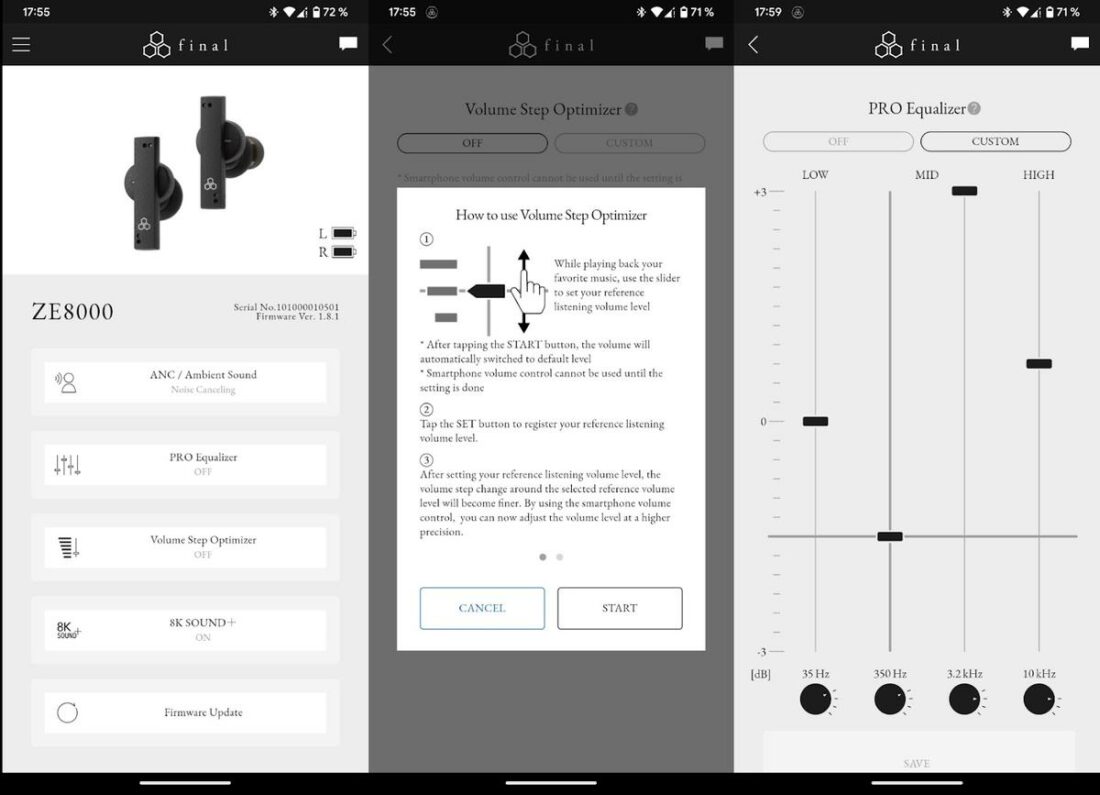
The EQ function helps in adding some much-needed boost to the upper mids, but these frequencies cannot be altered more than +/- 3dB, which is barely adequate. I would have also preferred multiple profiles since now you can only have one custom profile (which seems like an arbitrary limitation).
Comparisons
vs Final ZE3000
The Final ZE3000 are the entry-level TWS IEMs in Final’s lineup and are one of my favorite wireless IEMs. The ZE8000, meanwhile, are the flagship and have far more features.
You get app support, ANC, and 8K mode with the extra bucks. On paper, at least.
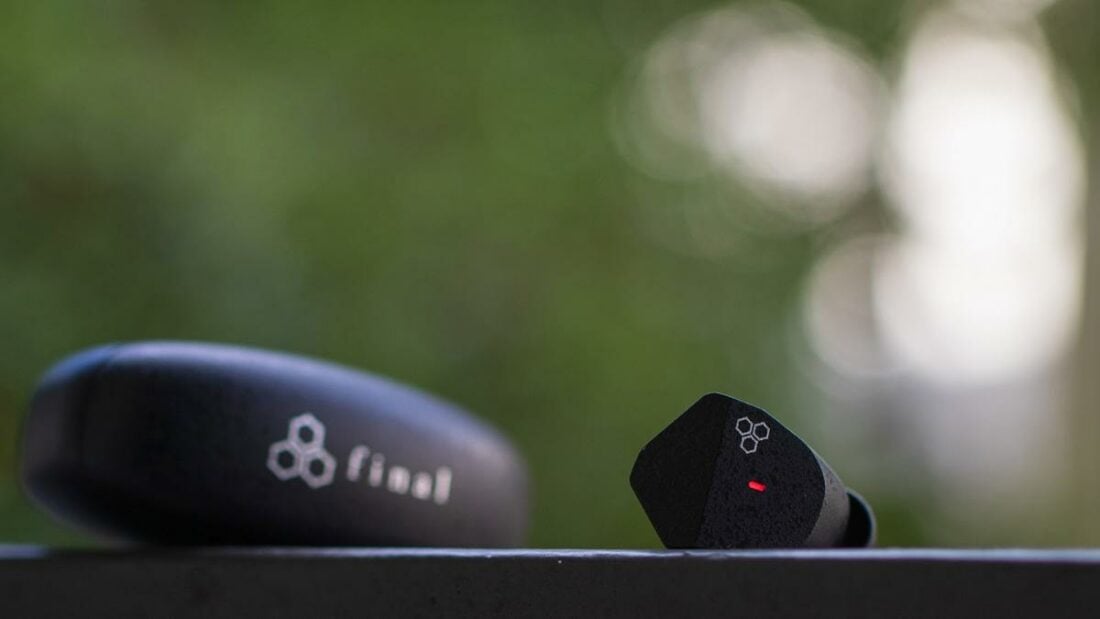
In reality, the passive isolation on the ZE3000 is good and has no issues with wind noise, unlike the ZE8000. The upper-mids are far more engaging, and the treble sounds more “lively.”
The ZE8000 have superior bass texture and treble extension.
Imaging and staging are also better overall on the ZE8000. The ZE3000 scores higher on certain usability aspects: a smaller carrying case, far superior battery life, and a more snug fit. The microphones are terrible on them, though.
The price difference is a big barrier for many. The ZE8000 are more than twice as costly as the ZE3000 without being a wholesale upgrade on all fronts.
If you want the best value for your money, the ZE3000 are no-brainers. If you want the best Final has to offer, the ZE8000 are the only choice, even though they come with a laundry list of caveats.
Conclusion
Final has put a lot of effort into its flagship TWS IEMs. The shell design is unique, the app was developed from the ground up, and the ANC tech also debuted in a pair of Final IEMs. Microphone performance is also good – a welcome improvement over the entry-level ZE3000.
The driver is among the highest performing in the TWS landscape, and the use of class-AB amplification highlights Final’s attention to the subtlest details.
Sadly, the ZE8000 need certain usability improvements. The carrying case is comically large, the ANC has issues cutting out wind noise, and the battery life is far from class-leading. Also, the price is no joke, veering into the territory of wired IEMs that are noticeably better in terms of sound.
The abrupt tuning change due to a firmware update eclipses all these concerns, opening a whole new bag of confusion. Should I upgrade the firmware if I already like the tuning? How do I get back to older firmware? Will it change again two months later?
The driver is very capable, no doubts there. Had Final stuck with the original tuning, I would have recommended the ZE8000 to those looking for the most resolving pair of TWS IEMs, something I cannot say under the current tuning.
So the ZE8000 will remain the best TWS IEMs that I cannot recommend, for now, at least. My stance may change based on Final’s response and future updates, but we will cross that bridge when we get there.
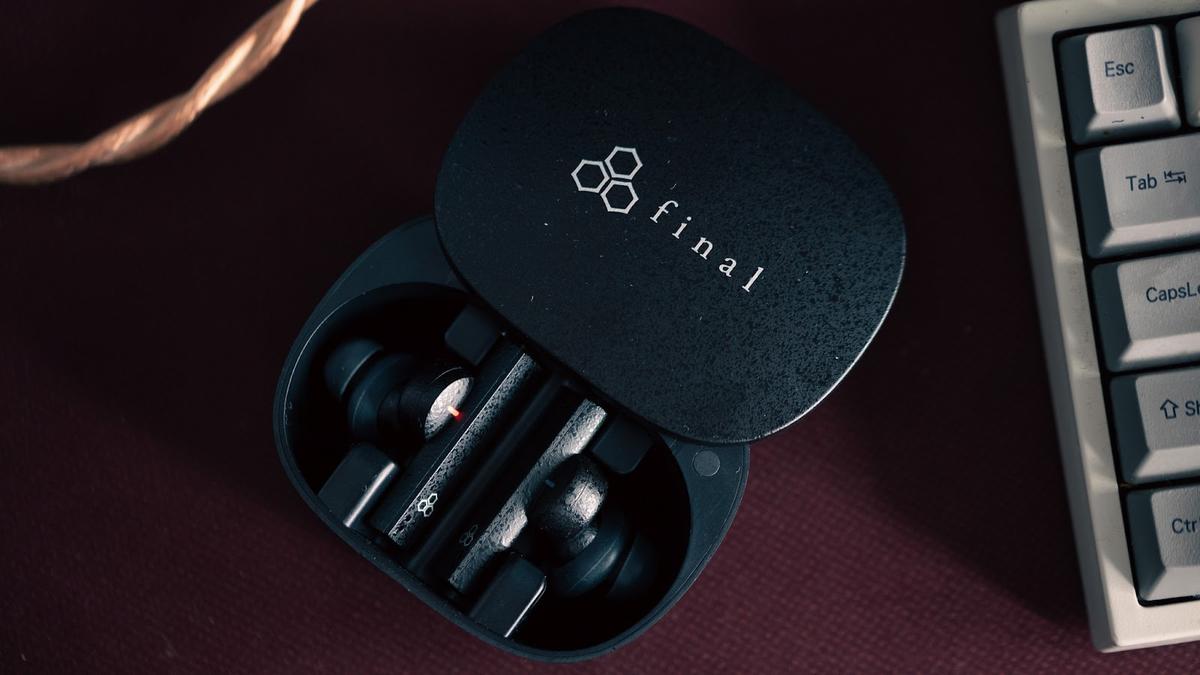
I literally just picked these earbuds up today and also noticed that the set I tested in-store (v1.81) had a very different sound to my purchased pair (v1.7). Thanks for confirming the tuning difference! Look forward to hearing about the update and if it’s possible to downgrade as well.
I have a pair that I am leaving on 1.7.8 for now as even with that version I had to tweak the EQ. Have you been able to get any updates from Final?
No updates as of yet, so probably best to not update to latest firmware if you like the older tuning.
Any chance you’ve been able to compare the latest firmware version (1.8.6) and if anything changed with that again, soundwise?